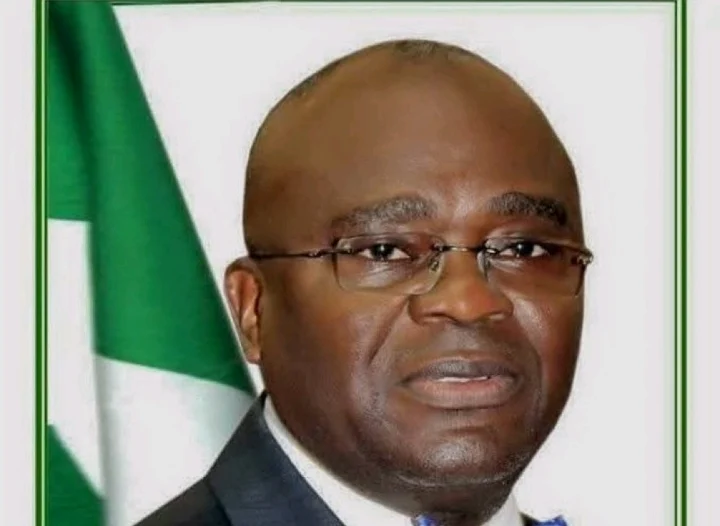…As ‘December spending boosts Lagos economy by N50b’***
Some bridges in Lagos are at a risk of buckling under the weight of parked heavy-duty trucks.
The Ijora, Eko and Carter Bridges are under great strains from immobile articulated vehicles, a situation worsened by recurring gridlocks and the deplorable state of roads leading to ports and tank farms.
Other bridges affected by similar stress are those at Abati Barracks, Ojuelegba and Stadium.
The Guardian recently counted 85 articulated vehicles conveying containers of various sizes parked between the Ijora and Jibowu Bridges.
An empty 20-feet container weighs 2,000 kilogrammes. A 40-feet container doubles the kilogrammes. With an average truck weighing about 14,000 kilogrammes, the total weight of 25 stationary trucks on the Ojuelegba Bridge could be around 450,000 kilogrammes. This is besides the weight of other vehicles. The implication is that the four bridges on the Western Avenue area of the city – Ijora, Stadium, Ojuelegba and Abati Barracks – pack a massive 1.53 million kilogrammes on an average day.
The load on these bridges, not originally designed to host heavy static vehicles, and a lack of consistent and thorough maintenance could spell tragedy.
Structural engineer and immediate past President of NIStructE, Oreoluwa Fadayomi, said: “When these vehicles are stationary on the bridges for a long time, they have negative impacts. These include deterioration, bridge-fatigue, damage or even collapse. Moreover, there is no money anywhere now to build these kinds of solid structures again. Bridges are made so that vehicles keep moving.”
He warned: “There is also the risk of a fire. If any of the articulated vehicles catch fire, there would be a chain reaction, which can cause severe damage to the bridge. We are sitting on a keg of gunpowder because the bridges are weakening daily, as tankers, trucks and articulated vehicles park on them due to traffic congestion.”
He urged government to address the causes of vehicles parking on bridges and ensure proper and timely monitoring of the facilities. “Something should be done to stop it very fast because of the negative effect on the infrastructure and possible disaster in the event of a collapse,” Fadayomi added.
The challenge on the bridges is exacerbated by construction on the Apapa Road and the current fuel scarcity in the country. As a result, many vehicles are forced to stay permanently on the bridges for weeks, due to lack of loading bays in tank farms and oil companies.
Previous attempts by the Federal Government and Lagos State authorities to curtail the problem have proved abortive. The office of the Federal Controller of Works, Lagos, has on several occasions given ultimatums to truck drivers or even deployed force, to no avail.
Most of the bridges were constructed during the 1970s oil boom. The nation would need $8 billion yearly to close up the huge gap in its public infrastructure and about $14 billion every year to fund infrastructure. Regrettably, current spending on infrastructure is an estimated $6 billion. Also, for decades, budgets for capital expenditure by federal and state governments have been on the decline while recurrent expenditure has been rising. The average government budget for capital expenditure has been about 25 per cent.
According to the past President, Nigerian Institution of Structural Engineers (NIStructE), Dr. Samuel Ilugbekhai, the state of the bridges is one of gross structural abuse. He stressed that they were not designed to bear enormous weight from static trailers and tankers, and warned that their life spans could be shortened.
Urging government to put more effort into solving the problem, he noted the difference between buildings that house car parks and bridges. While multi-storeyed parks are designed for the specific purpose, bridges are intended to carry transitional loads within seconds. “They are not designed to retain loads for one hour, two hours, days or weeks,” Ilugbekhai said.
Also, President of the Nigerian Institute of Structural Engineers, Eddy Atumonyogo, said besides the destructive strain on the bridges, aesthetics is also compromised, with engine oil and other pollutants threatening surfaces.
The Federal Controller of Works in Lagos, Mr. Godwin Eke, however said government is aware of the dangerous state of the bridges. He said talks are ongoing with Ogun State to provide a loading bay where vehicles, especially those along Western Avenue, could park.
In the meantime, Lagos State said yesterday that its economy got a N50 billion boost this month through spending in the creative sector.
Information and Strategy Commissioner Steve Ayorinde said from various reports, statistics and analyses monitored over the last few days, additional spending of about N50billion in the creative entertainment sector was recorded within the last 25 days.
He described this as reinforcing the profile of the state as the hub of entertainment and tourism and the economic capital of West Africa.
He said the peak in entertainment activities and the huge influx of people on holiday visits impacted positively on the economy at a time that corporate sponsorship of the creative sector also recorded an appreciable growth.
Ayorinde said reports monitoring the current trends show multi-billion naira spending in hotel accommodation across the state; alcohol and beverage consumption as well as culinary business; visits to resorts, parks, clubs and lounges, live theatre and cinemas; fees for musicians, their handlers and technical officials as well as ancillary businesses like fashion and clothing, kiddies’ games and toys, specialised taxis and private security guards that all contribute into the tourism and entertainment sectors.
“What this cash-enabled December has shown is a massive growth in the creative economy sector in Lagos State.
“The entire state is agog, hotels are fully booked from Victoria Island to Ikeja, Epe and Badagry. There is a renewed sense of fun among the citizens and visitors. The volume of entertainment content being created for the pleasure of the citizens and media is unprecedented right from the beginning of the month.
“COPA Lagos Beach Soccer Tournament at Eko Atlantic was a combination of football and musical performances. The Lagos Street Carnival was a demonstrable evidence of the government’s assurance that security and traffic management can now be taken for granted in the state when big shows happen. New cinemas are being launched and all are recording huge box office takings. Four of Africa’s biggest musicians – Olamide, Falz, Wizkid and Davido – have had the biggest concert productions in Africa in the past one week.
“And we have now entered Day 5 of the 8-day, 5-centre One Lagos Fiesta that is featuring more than 700 artistes, if you add dancers, instrumentalists and participants at the Lagos Grows Talent component of the fiesta. This is an extra-ordinary entertainment value chain that is impacting on the pockets and well-being of the people. This is an economic reality that you can only get in Lagos State.”
He said: “This Government has found a nexus between art and prosperity. Part of what we have done with care in the past two and half years is to develop and nurture the entertainment value chain that feeds the creative economy of the state. We are aware and happy that industries in the creative economy supported more than 500,000 direct, indirect and induced jobs in the past 30 months, cutting across music promotion, live entertainment, motion picture, digital media, live theatre and cinemas as well as fashion and culinary businesses.”
Guardian NG with additional report from Nation




















